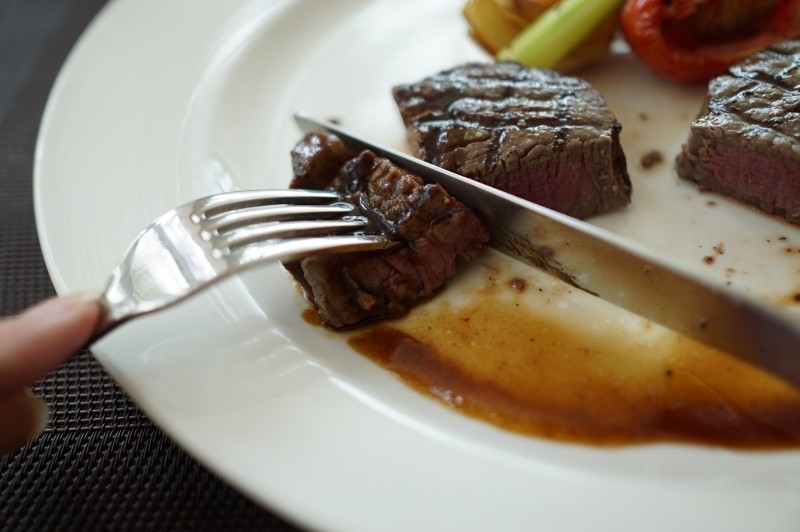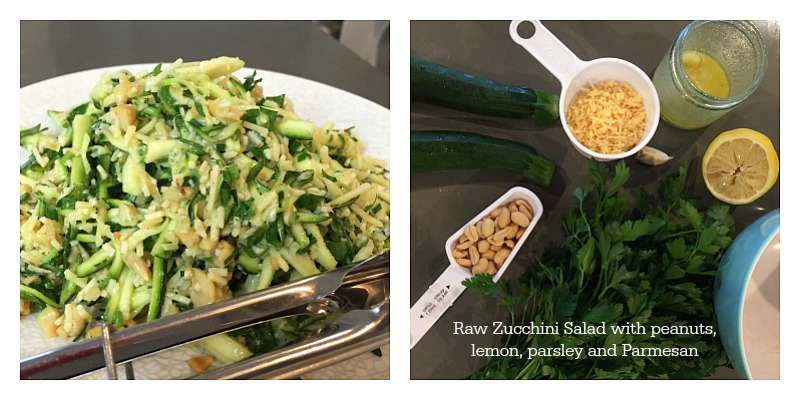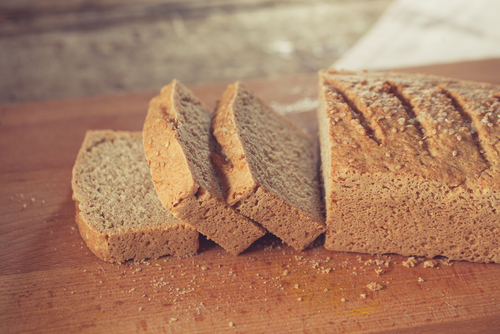- Home
- Blog
- Healthy Eating for Wellness
- Stuck in the middle of the warring Food Tribes
Stuck in the middle of the warring Food Tribes
Written by Catherine Saxelby
on Wednesday, 23 March 2016.
Tagged: carbohydrates, diets, gluten-free, healthy eating, healthy lifestyle, IQS, paleo, raw, wellness

At times, I feel like I’m in the middle of four main, warring, dietary tribes – Paleo, IQS (I Quit Sugar) Raw and GF (Gluten Free). They seem to have become part religion, part fad and VERY PASSIONATE. They all have their positives, but equally important, they have their negatives. Most, without modification, are neither balanced nor practical for long term eating, especially for families with hungry, growing teens.
The tribal mantras
Each tribe has its own dietary mantra:
- For Paleo it’s No grains, legumes, white potato (think carbs) or dairy.
- For IQS it’s No sugar, no fructose.
- For Raw it’s No cooked food (over 60 degrees C or 120 degrees F).
- For GF it’s No gluten, a protein found in wheat, spelt, rye, barley and oats (although oats is debatable).
Admittedly, this is just shorthand for what these diets stand for, but it gives you an idea of what you’re in for should you decided to join a particular tribe. Let’s look at them in a little more depth.
Paleo
Popularised by celebrity chef Pete Evans, in Australia, this diet is also known as the Caveman Diet or the Hunter-Gatherer Diet as it claims to be the way we ate when we roamed the savannah trying to snare dinner (a wild animal).
 Paleo eliminates three key food groups, namely, grains, legumes or pulses, and dairy, on the belief that these foods only appeared AFTER agriculture took hold some 10,000 years ago. And our bodies supposedly haven’t had time to adapt our genetic makeup. Again this has been disputed by researchers.
Paleo eliminates three key food groups, namely, grains, legumes or pulses, and dairy, on the belief that these foods only appeared AFTER agriculture took hold some 10,000 years ago. And our bodies supposedly haven’t had time to adapt our genetic makeup. Again this has been disputed by researchers.
Avoiding these three groups leaves huge nutritional holes in the Paleo profile (e.g. smart carbs, fibre, B vitamins, calcium and antioxidants) and makes it an impossible diet to stick to or to fuel growing bodies or sporty bodies.
I’ve written about it in depth on the Foodwatch website where I reviewed the book, explained the basics and I also trialled it for a week and you can read about my experiences here.
There is no ONE Paleo diet.
- Our early ancestors ate what was available and in season. The daily diet of Australian Aborigines was vastly different to the diet of people living in the frozen northern parts of Europe, for instance.
- The concept of the Paleo Diet was the result of research by many groups of biologists amongst them was Dr Loren Cordain whom I’ve had the pleasure of hearing lecture on a couple of occasions. Read more about his book here.
Signature dishes
Bison Burgers or Paleo Sausage Egg McMuffin from Nom Nom Paleo
I Quit Sugar (IQS)
Popularised by Australian journalist Sarah Wilson, this diet has caught on like wildfire. It is similar to Paleo except it allows bread and grains, legumes and dairy so is more rounded and varied. You cook a lot of vegetables and steer clear of packet and processed fare.
I reviewed Sarah’s book here and trialled the diet. You can read about my experiences here. I also reviewed That Sugar Film by Australian actor Damon which documents his 60-day journey where he eats ‘supposedly healthy’ foods to equal 40 teaspoons of sugar each day from 'hidden' sugars in processed foods.
Signature dishes
Sugar-free desserts such as Sugar-free raspberry ripple, Sugar Free Chocolate Fudge or this No-Bake Cheesecake.
I don't share the love of coconut fat/oil and rice malt syrup so often used in these sweet recipes as they end up being so rich and heavy without a satisfying sweet note.
Raw
Raw food was all the rage in the 1980s with the book Raw Energy: Eat Your Way to Radiant Health by Leslie and Susannah Kenton. It’s recently become trendy again but only in the cities. Why? Because in the bush or other remote areas it’s impossible to get fresh produce – so not a diet available to all.

I road-tested the Raw food diet for a week and you can read about my experiences here. When I was visiting the UK I also took the opportunity to visit Tanya’s Raw Food Café in Chelsea, London to see how the professionals prepare raw dishes. You can read my review here. On the Foodwatch website we also have recipes for Raw Cacao and Fruit balls and green kale smoothies.
Signature dishes
“Zoodles” are Raw Zucchini Noodles and can be made on a spiralizer or simply by grating coarsely or cutting into thin julienne strips. See my yummy Zoodle Salad above.
Here’s Jill Dupleix’s recipe which tastes pretty good or, there's Zucchini with Kalamata Olives and Goats Cheese.
Here's a how-to guide.
Gluten-Free (GF)
This craze for gluten-free food has taken on epic proportions. Just visit any supermarket and you’ll find a veritable cornucopia (pun intended – corn is GF) of gluten-free products. These are useful for those in the community who are unfortunate enough to be diagnosed with coeliac disease or who have a non-coeliac gluten sensitivity.
For the rest of use, we don’t need GF foods. What’s more, despite their ‘health halo’, GF foods are not healthier alternatives and they often have ‘extras’ added to their formulation to make up for the gluten that’s been removed. They’re often high GI (so rapidly digested and rapidly absorbed), low in fibre and highly processed so if you don’t need to eat gluten-free, then don’t part with your money.
You can enjoy a naturally gluten-free way of eating based on meat, fish, eggs, vegetables, fruits, milk, plain yoghurt, nuts, potato, sweet potato, rice and buckwheat with minimal or no pasta, bread, couscous and breakfast cereals.
Take a look at my article 7 reasons why gluten-free doesn’t mean healthy. In 2014 I devoted a whole newsletter to gluten-free issues, take a look.
Signature dishes
Anything baked in a gluten-free version such as a decent Gluten Free bread (everyone misses bread and you’ll read why gluten is so vital to break making here) and, a nice Gluten Free Banana Bread using special GF flour.

Tribal opportunity
One savvy burger company - Grill’d Healthy Burgers – noticed the tribal segmentation of the dietary market and instead of viewing it as a threat has turned it into an opportunity. They reviewed a variety of research papers and surveys to see how the market was segmented. Their review found more than 2.3 million Australians are on a diet at any one time; with 44 per cent of adults stating that food allergies, restrictions and avoidance of certain ingredients dictated their eating habits and food choices.
Armed with this information Grill’d has come up with a menu that means almost anyone, on any food regimen can find something they can eat in one of their stores. Clever!
My verdict?
Pick out the strengths from each tribe and don’t cut out ANY food group completely. For instance, if you think wheat is causing you bloating or flatulence, cut out the main sources in your diet which are generally bread (including fruit loaf, pizza and burger buns), pasta and breakfast cereal.
Don’t fret about the minor sources such as starch thickeners or starch coating on jelly beans. Whatever tribe you follow, remember they all encourage you to eat well and cook from scratch, enjoying more salad, vegetables, avocado, meat, fish, chicken, eggs, nuts and seeds, which are wholesome foods that nourish your body.
If you can’t figure this all out, make an appointment with an Accredited Practicing Dietitian (APD) and write out what you eat over a day and see if she (it’s almost always a she) can pinpoint any problem foods or areas for you.
Steak photo courtesy of Visual hunt.
Foodwatch
The Good Stuff
The Boring Stuff
© 2025 Foodwatch Australia. All rights reserved
Website by Joomstore eCommerce






